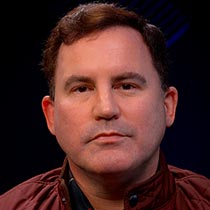Saving Money for College: Education Credits

Saving Money for College: Education Credits
Education credits are tax credits available for qualified education expenses paid by the taxpayer in the furthering of their education. Qualified education expenses are defined as an expense paid during the tax year for tuition and fees required by an eligible educational institution for student enrollment and attendance. Room and board, medical expenses, student health fees, transportation, personal living expense, insurance, course-related books, supplies, equipment, or any non-academic activity or non-credit course are not qualified expenses. What does this leave? Basically: tuition and fees required for enrollment or attendance at an accredited college, university, vocational or post-secondary educational institution.
If you take a tax deduction for education expenses in any other area of the personal tax return, you cannot use that expense when figuring a Hope or Lifetime Learning credit. If you make any prepayments of tuition, you can use the prepaid amounts on your current year’s federal income tax return, provided you have followed all other guidelines.
Hope Scholarship Credit (HSC)
Tax credit up to $1,500/year for each student
100% tax credit for the first $1,000 paid for qualified expenses. 50% tax credit for the second $1,000.
You may claim HSC for two years. The student must be in the first or second year and enrolled at least half time for one period of the tax year.
Covers tuition and fees.
You qualify by paying tuition and fees for yourself (if independent), your spouse, or your dependent child.
Student activity fees, athletic fees, and other expenses do not count toward your credit.
Grants and scholarships will reduce the tuition and fees used to determine your credit.
Eligibility decreases for modified adjusted gross incomes (AGIs) between $40,000 – $50,000 (filing single) and $80,000 – $100,000 (married, filing jointly). Cannot claim with modified AGIs above these limits.
You benefit from tax credits only to the extent you owe federal income tax. If you don’t owe taxes, you won’t receive a tax credit.
Lifetime Learning Credit (LLC)
May save you up to $1,000/year in federal taxes.
20% tax credit for the first $5,000 paid for qualified expenses. After 2002, a 20% tax credit on the first $10,000 paid.
No limit on a number of tax years you may claim LLC.
Covers tuition and fees.
Available to college juniors, seniors, graduate and professional students – and to students taking individual classes to improve job skills
You qualify by paying tuition and fees for yourself (if independent), your spouse, or your dependent child.
Student activity fees, athletic fees, and other expenses do not count toward your credit.
Grants and scholarships will reduce the tuition and fees used to determine your credit.
Eligibility decreases for modified adjusted gross incomes between $40,000 – $50,000 (filing single) and $80,000 – $100,000 (married, filing jointly). Cannot claim with modified AGIs above these limits.
You benefit from tax credits only to the extent you owe federal income tax. If you don’t owe taxes, you won’t receive a tax credit.
Student loan interest deduction
Parents and independent students may deduct interest on loans borrowed to meet college expenses
The deduction is for interest payments made during the first 60 months (5 years) in which interest payments are required.
Deduction diminishes for modified gross income between $40,000 – $55,000 (single filers) and $60,000 – $75,000 (married, filing jointly). Cannot deduct if income is above these amounts.
Maximum deduction in 1999, $1,500; in 2000, $2,000; 2001 and beyond, $2,500.
You are not required to itemize to receive the deduction.
Dependents may not claim the deduction.
Married couples must file jointly to receive the deduction.
Coverdell Education Savings Account
For each child under age 18, families may deposit $2,000 per year into a Coverdell Education Savings Account (formerly an Education IRA) in the child’s name. Earnings will accumulate tax-free. No taxes will be due upon withdrawal if the money is used to pay for post-secondary tuition and required fees, books, equipment, and eligible room and board expenses. Once the child reaches age 30, the account must be closed or transferred to a younger member of the family.
A taxpayer’s ability to contribute to a Coverdell account is phased out when the taxpayer is a joint filer with an adjusted gross income between $190,000 and $220,000, or a single filer with an adjusted gross income between $95,000 and $110,000. Note that a student who receives a tax-free distribution from a Coverdell account can also benefit from the Hope or Lifetime Learning education tax credits in the same year. For more information on these tax benefits, read IRS Publication 970, Tax Benefits for Higher Education. You can also consult your tax advisor.
Qualified Tuition Programs (QTP)
A qualified tuition program (QTP) allows family members to either prepay, or contribute to an account established for paying, a student’s qualified higher education expenses at an education institution eligible to participate in U.S. Department of Education student aid programs. Both states and eligible institutions can establish and maintain such programs.
When a family uses a qualified state-sponsored tuition program to save for college, no tax is due in connection with the plan either as funds accumulate or at the time of withdrawal, as long as the distribution is less than the beneficiary’s adjusted qualified higher education expenses. The same is true for institution-sponsored QTPs, except that only earnings distributed after January 1, 2004 are not taxable.
Using IRA withdrawals for college costs
You may withdraw from an IRA to pay higher education expenses for yourself, your spouse, your child or grandchild.
You will owe federal income tax on the amount withdrawn, but will not be subject to the 10% early withdrawal penalty.
—————————————————————————————————————————————————————————————————————
We hope you found this article about “Saving Money for College: Education Credits” helpful. If you have questions or need expert tax or family office advice that’s refreshingly objective (we never sell investments), please contact us or visit our Family office page or our website at www.GROCO.com. Unfortunately, we no longer give advice to other tax professionals gratis.
To receive our free newsletter, contact us here.
Subscribe our YouTube Channel for more updates.

Alan Olsen, is the Host of the American Dreams Show and the Managing Partner of GROCO.com. GROCO is a premier family office and tax advisory firm located in the San Francisco Bay area serving clients all over the world.
Alan L. Olsen, CPA, Wikipedia Bio

GROCO.com is a proud sponsor of The American Dreams Show.

The American Dreams show was the brainchild of Alan Olsen, CPA, MBA. It was originally created to fill a specific need; often inexperienced entrepreneurs lacked basic information about raising capital and how to successfully start a business.
Alan sincerely wanted to respond to the many requests from aspiring entrepreneurs asking for the information and introductions they needed. But he had to find a way to help in which his venture capital clients and friends would not mind.
The American Dreams show became the solution, first as a radio show and now with YouTube videos as well. Always respectful of interview guest’s time, he’s able to give access to individuals information and inspiration previously inaccessible to the first-time entrepreneurs who need it most.
They can listen to venture capitalists and successful business people explain first-hand, how they got to where they are, how to start a company, how to overcome challenges, how they see the future evolving, opportunities, work-life balance and so much more..
American Dreams discusses many topics from some of the world’s most successful individuals about their secrets to life’s success. Topics from guest have included:
Creating purpose in life / Building a foundation for their life / Solving problems / Finding fulfillment through philanthropy and service / Becoming self-reliant / Enhancing effective leadership / Balancing family and work…

MyPaths.com (Also sponsored by GROCO) provides free access to content and world-class entrepreneurs, influencers and thought leaders’ personal success stories. To help you find your path in life to true, sustainable success & happiness. It’s mission statement:
In an increasingly complex and difficult world, we hope to help you find your personal path in life and build a strong foundation by learning how others found success and happiness. True and sustainable success and happiness are different for each one of us but possible, often despite significant challenges.
Our mission at MyPaths.com is to provide resources and firsthand accounts of how others found their paths in life, so you can do the same.
The Power of Investing With ESG | Peter Kellner
Interview Transcript of: The Power of Investing With ESG | Peter Kellner Alan Olsen: Can you tell us a little about your background? Peter Kellner: I got out of college in the early 90’s with a real passion for sustainability. I went to Budapest, Hungary on a scholarship. My family is actually from Budapest and…
Charitable Donations May Avoid Capital Gains Tax
Charitable Donations May Avoid Capital Gains Tax Charitable donations may avoid capital gains tax if structured properly. Many family offices choose to be engaged in philanthropy at some level. Unfortunately, selling stocks and other securities in order to make a charitable donation often results in the need to pay capital gains tax. One way to…
Service Through Public Health | Dr. Jacob Eapen
Transcript: Alan Olsen: Can you share a little about your background? Dr. Jacob Eapen: I was born and brought up in India in a southern part of Indian, a state called Kerala. Did my undergraduate, Doctorate and did my post graduation there and moved to Africa where I was a consultant pediatrician for a…




